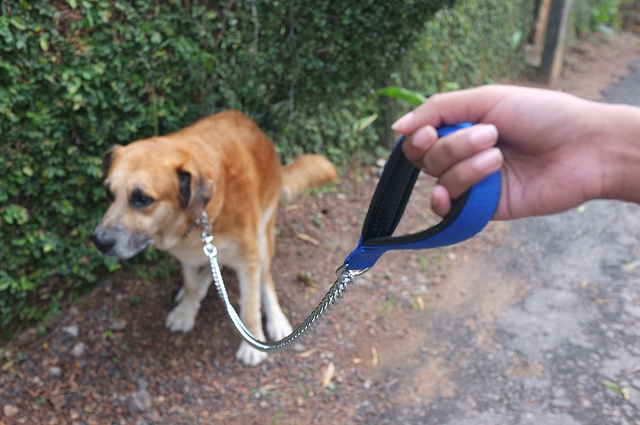Poop: it may not be glamorous, but it’s a key indicator of what’s going on internally. Dog owners should take a minute every day to look at their dog’s droppings and know what their pup’s poo is like on a healthy, “normal” day.
We at iHeartDogs asked Dr. Michel Selmer, DVM, CTCVMP, about what sorts of red flags to look for when it comes to our companion’s stools. Also known as “The Caring Vet,” Dr. Selmer is a Certified Veterinary Food Therapist (CVFT) who uses principles from Traditional Chinese Veterinary Medicine (TCVM) to treat his patients.

In the words of Dr. Selmer:
Nobody likes to talk about poop… or do we?
Anyway, there are things we want to see in regards to poop and things we don’t want to see (or smell). Your dog’s poop should stay consistent in color, a nice brown is always admirable. The shape should be like a “log” or “Tootsie Roll,” depending on the size of your pooch. The poop should have a sheen to it and be firm or “dent-able.”
According to Dr. Selmer, the following are signs that should nudge you to call your veterinarian:
1. Blood
PetMD explains that blood in the stool could be a sign of food borne illness or different forms of gastroenteritis, caused by pathogens or food allergies. While the symptom could simply be the result of digestive irritation, it could also be caused by something fatal, so consult with your vet.
2. Mucus
If you see this in your pooch’s poo, PetMD says that it can be anything from stomach upset from a change in diet, to parasites, to cancer. Especially if the mucus is excessive and lasts more than a day or two, your dog should really be seen by a doc.
3. Grease
According to Healthy Pets, greasy and yellow-looking bowel movements can signify an enzyme deficiency or too much fat in the diet, a which can lead to pancreatitis.
4. Straining or pain while trying to poop
If your pup is having difficulty passing stool, especially for more than a day, it should not be ignored. The culprit could be a simple case of constipation or a life-threatening blockage like a foreign object or tumor, according to Healthy Pets. Infected anal glands could be to blame, too.
5. If it suddenly smells really foul
Fido’s feces may not smell fresh as a daisy, but if it’s downright putrid, there could be a problem. Petco Community says that this could be a sign that your pup isn’t digesting his food as well as he should be. Whatever the case, this “red flag” should not be ignored.
6. Abrupt changes in color, consistency, or even smell
Know what your dog’s poo looks like, and even smells like, on a normal, healthy day. Any sudden changes can indicate that something has also changed internally, so make sure to consult with your veterinarian!
For a quick guide, check out this video on signs of healthy and unhealthy poo:
For real poo pictures and descriptions, visit the Healthy Pets website.
We want to thank Dr. Selmer for sharing his wisdom with us. If you want to learn more about taking a holistic approach to your pet’s healthcare, check out his book The Best of Both Worlds: An Advanced Guide to Integrative Veterinary Care for Happier, Healthier Pups. You can also check out his website and follow him on Facebook.

